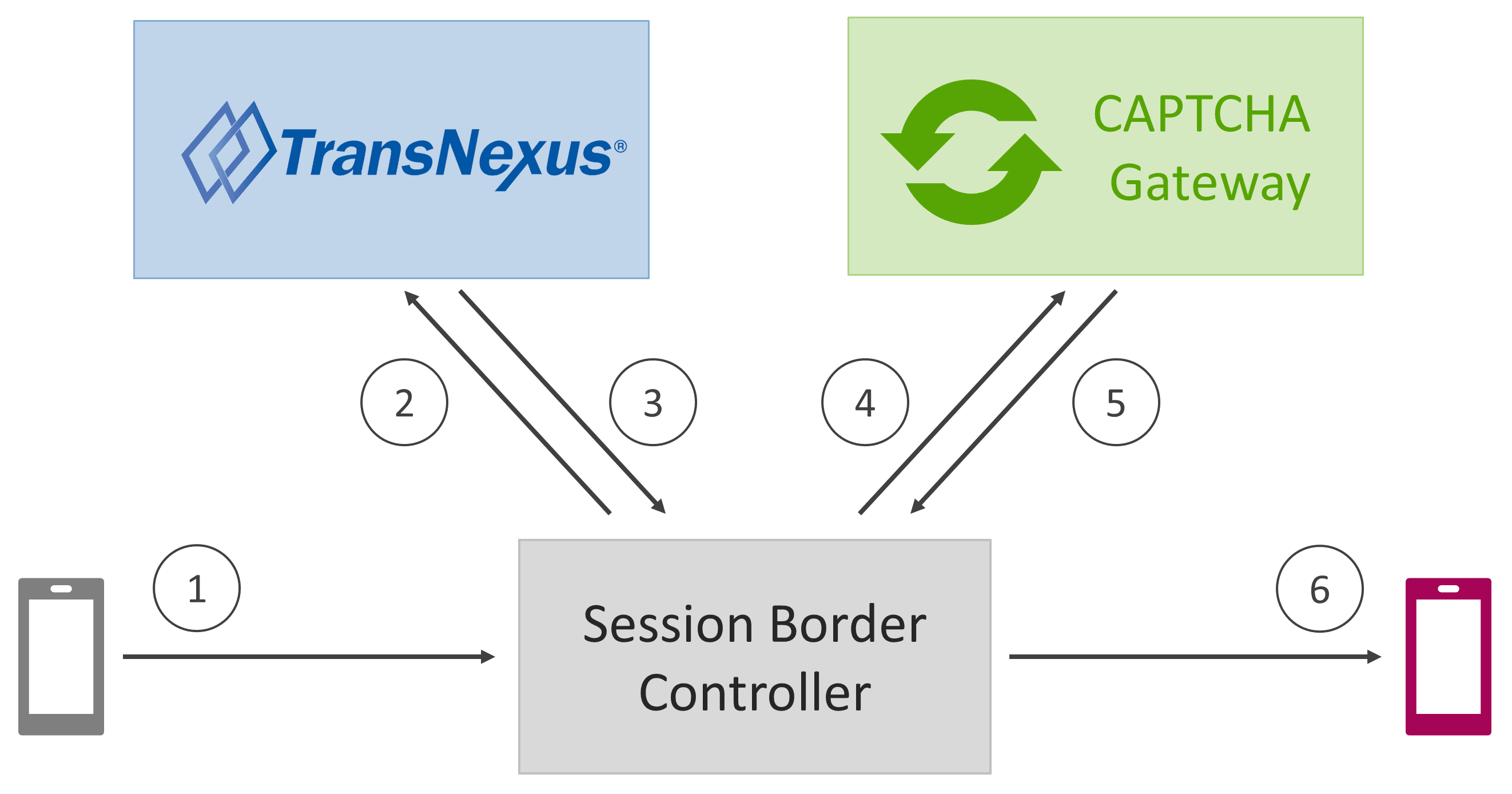CAPTCHA gateway
The TransNexus CAPTCHA gateway is used to screen calls with interactive voice response (IVR). This is especially useful in scenarios where a call might be bad, and you’d like to test whether the caller is human before blocking the call.
Background
CAPTCHA is an acronym that stands for:
Completely
Automated
Public
Turing test to tell
Computers and
Humans
Apart.
Turing test refers to Alan Turing, a British computer scientist who developed his Turing test in 1950 to measure a machine’s ability to exhibit human behavior. A Turing test is conducted by a human, and the machine subject passes the test if its behavior is indistinguishable from expected human behavior.
CAPTCHA is a reverse Turing test in which the roles are reversed. A computer conducts the test, and the human subject passes the test with responses that a machine is unlikely to be able to provide.
CAPTCHA has become widely used on internet websites to prevent input from internet bots, which are software applications that run automated scripts.
The same approach can be taken on telephone calls to identify and block calls made by bots while allowing calls made by humans to connect. This can be used to prevent unwanted robocalls and telecom fraud attacks.
TransNexus CAPTCHA gateway
The TransNexus CAPTCHA gateway is a hosted service that answers calls and performs a reverse Turing test using IVR. If the caller passes the test, the call is referred to the service provider’s SBC for call completion. If the caller is a bot, it will likely fail the test, and the CAPTCHA gateway will end the call.
CAPTCHA gateway call flow

Here are the call flow steps:
- The call arrives at the SBC.
- The SBC sends the call to the TransNexus software for services.
- If the TransNexus software determines the call should be diverted to CAPTCHA, it returns SIP 302 MOVED TEMPORARILY to the SBC, which then sends the call to the CAPTCHA gateway.
- The CAPTCHA gateway responds to the call with SIP 183 SESSION PROGRESS and prompts the caller to enter a random two-digit code. Session Description Protocol information in the SIP 183 enables the CAPTCHA response to be accepted from the caller.
- If the caller enters the code correctly, the CAPTCHA gateway returns SIP 503 SERVICE UNAVAILABLE. If the code is not entered correctly, the CAPTCHA gateway returns SIP 603 DECLINE.
- If the SBC receives SIP 503 SERVICE UNAVAILABLE, it route advances and sends an INVITE to the called party to connect the call. If it receives SIP 603 DECLINE, it blocks the call.
Use cases
Here are a few examples of ways to improve service in your network with the TransNexus CAPTCHA gateway:
- Check for inbound annoying robocalls
- Screen calls to high-risk destinations
- Assess calls to NPA-NXXs often used in domestic traffic pumping fraud attacks
- Check calls made to numbers that are sometimes used for legitimate purposes, other times used for fraud, e.g., free conference calls
- Evaluate calls with caller ID using same NPA-NXX as a called number that’s typically used to receive nationwide calls (prevents neighbor-spoofing)
- Check international calls
- Block telephone denial-of-service attacks.
Availability
The TransNexus CAPTCHA gateway is a hosted solution that’s available for use with any telecom network with a SIP gateway. The TransNexus CAPTCHA gateway integration is readily available in ClearIP and NexOSS.
Contact us today to learn how the TransNexus CAPTCHA gateway can improve service and call handling in your telecom network.